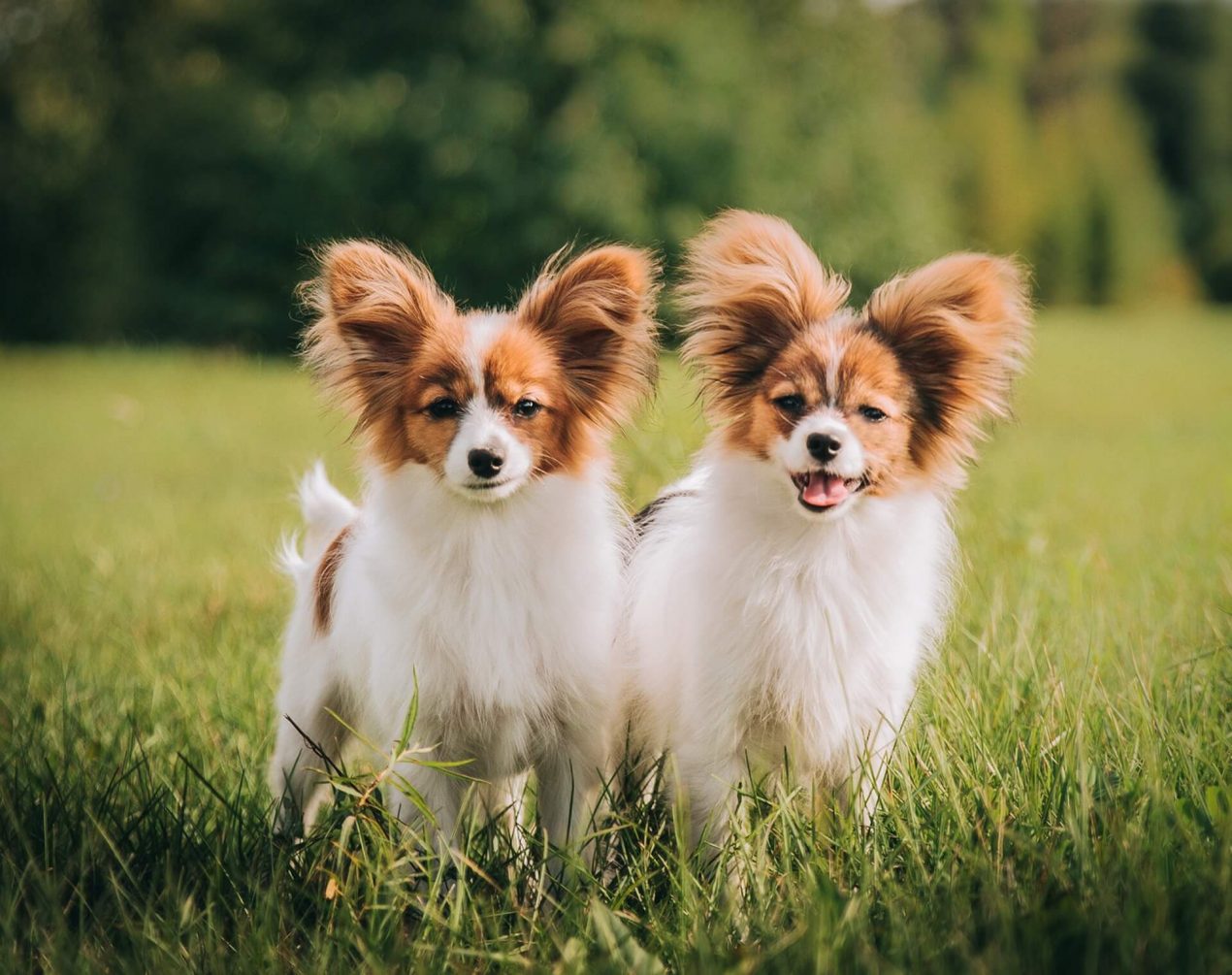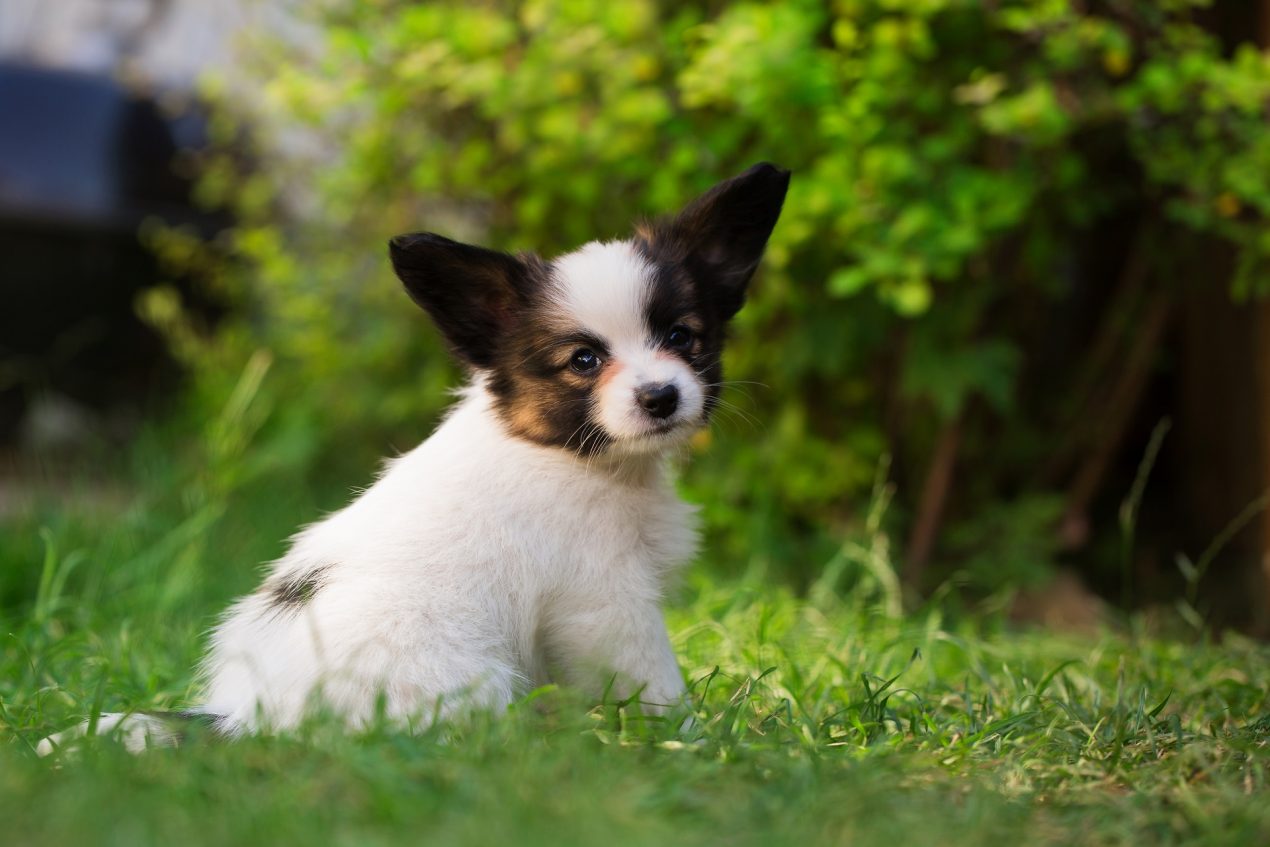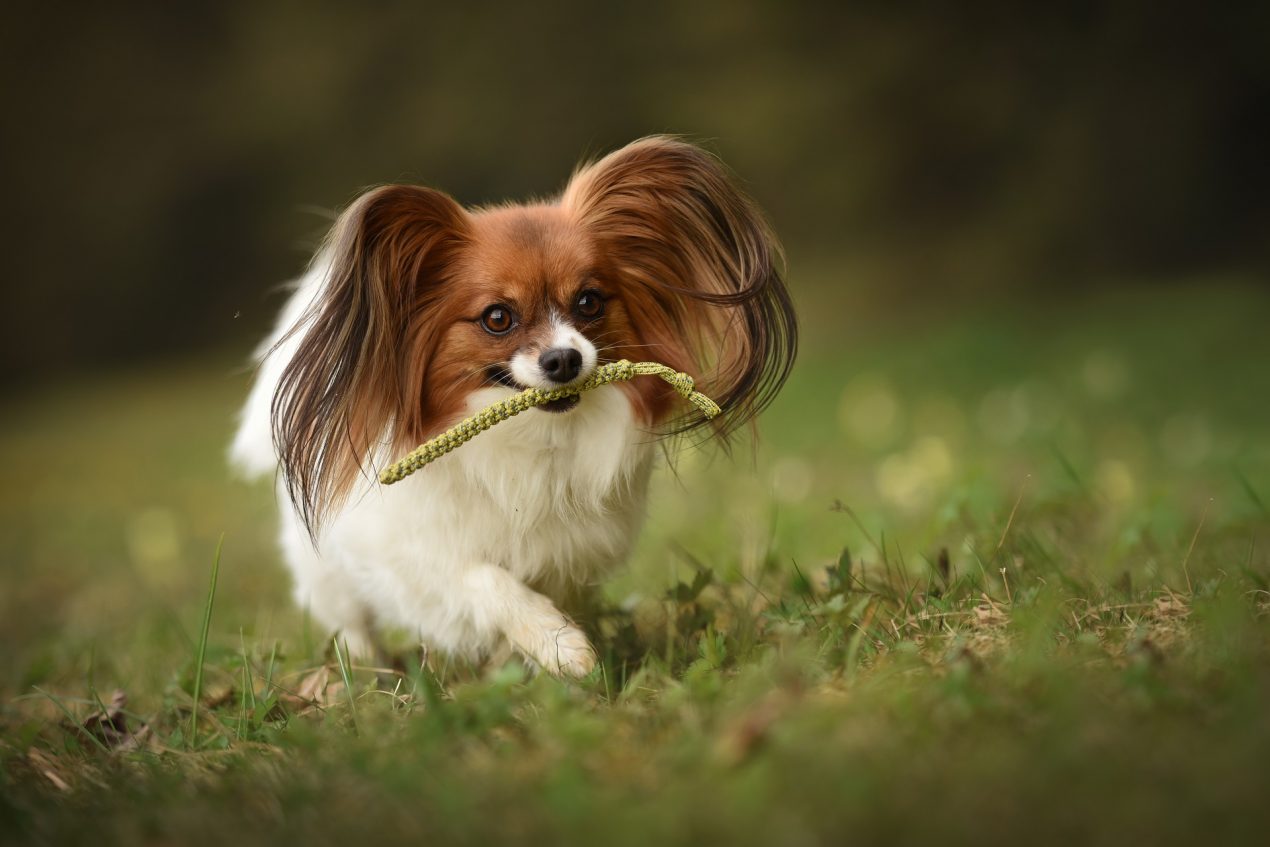The Papillon is a small companion dog that has always been very people-oriented. The familial characteristics still run in its blood today. Due to its affable nature, it is not only a great companion but also a good-natured beginner’s pet that enjoys being guided.
History of the Papillon
The Continental Toy Spaniel has been known in Spain since the 12th century, where it was meant to be a companion to the aristocracy. In the 16th century, various paintings emerged that resembled the Papillon of today. However, it was a long breeding process until the first breed standard was established in 1935. The Chihuahua, the Spitz, and Spaniels were the genetic origins of today’s Papillon.
It was recognized as its own breed by the FCI in 1990. However, there is still no consensus on its exact origin. England, France, and Belgium are often mentioned together. Unlike the other countries of origin, the dog bears a French name (Papillon means butterfly in French and refers to the ears).
Breed Overview
GROUP: Toy
HEIGHT: 8 to 11 inches
WEIGHT: 6 to 10 pounds
COAT: Straight, long, single-layer
COAT COLOR: White with markings and a mask of color, usually red, sable, black, or lemon
LIFE SPAN: 14 to 16 years
TEMPERAMENT: Intelligent, happy, friendly, energetic, alert
HYPOALLERGENIC: No
ORIGIN: France
Nature and Character
The Papillon has learned nothing in its life other than being capable of being a companion dog. Therefore, it is far from displaying the stubborn behavior shown by various working dogs. The Papillon is a dog open to good leadership. Due to its people-oriented nature and gentleness, it is also suitable for an inexperienced dog owner.
| Affection Level | High |
| Friendliness | High |
| Kid-Friendly | Medium |
| Pet-Friendly | Medium |
| Exercise Needs | High |
| Playfulness | High |
| Energy Level | Medium |
| Trainability | High |
| Intelligence | High |
| Tendency to Bark | High |
| Amount of Shedding | Low |

In general, the small four-legged friend gets along well with other dogs. However, if other dogs get too close to its owner, it tends to become jealous. Additionally, it is full of self-confidence and has the tendency to take over leadership in a group – even towards larger breeds. When two confident individuals face each other, there may be conflicts. The confident demeanor of the small breed is also reflected in its watchdog instinct. If someone intrudes into its territory, the Papillon announces this incident with insistent barking.
Acquiring a Papillon
Although there are 18 American breeders registered with the AKC, most of them do not currently have planned litters. Consequently, the acquisition costs can be high (around $1,500). Papillons/Papillon mixes are available in shelters at a lower price. However, the selection is very limited. In addition, training such a dog (depending on its background) can be a challenging task.
What should I consider when buying?
The purchase of a dog should always be a well-thought-out decision. You can orient yourself on these criteria:
- The breeder should carefully select the breeding animals to largely exclude hereditary diseases.
- The puppies need age-appropriate health protection. They should also be checked for diseases to reduce the risk of later eye diseases or patellar luxation.
- A visit to the premises (litter + mother) should be possible by appointment.
- Avoid online purchases, as this is where most fraud cases occur.
- The breeder should be an experienced member of a club (Papillon Club of America).
- There should be no duplicate entries in the pedigree (inbreeding).

Development and Training of the Puppy
The Papillon is a quick learner but still needs strict training. Because training is comparatively easy, it is considered a beginner’s dog. Despite this good predisposition, the implementation of what is learned can vary from dog to dog.
Since the Papillon has no natural respect for larger dogs, an essential aspect of training is early socialization. The goal is for the Papillon to be able to interact confidently with its peers and learn to avoid conflicts.
How do I care for a Papillon?
The Papillon is an affectionate dog that needs a secure place in the family circle. Since it is easily trainable, it is possible for it to accompany its owner to external appointments. Due to its sociable nature, the friendly four-legged companion also feels comfortable in the presence of strangers. This includes interaction with children. The Papillon is very sociable and has a reputation for being child-friendly. Nevertheless, dogs (of any breed) and children should never be left alone.
Because the lively small breed is very people-oriented and has a compatible nature, it is recommended for people of all ages, in all life situations, and even as a first dog for beginners. Similarly, it can also be a second dog or the new companion in a household with cats (provided good socialization). Regarding accommodation, the little rascal has no preference. The living situation can be urban or rural. But beware in an apartment: The Papillon may need targeted training as it tends to bark.
Activities with the Papillon
The Papillon is curious, lively, and attentive. With this combination of traits, the small four-legged friend is predisposed to physical challenges. Dog sports such as agility are a great pastime, allowing the Papillon to unleash its energy.

It’s nice for the four-legged friend to experience a sporting highlight (dog sports, hiking) once or twice a week. On other days, it can also easily adapt to classic walks. The main thing is that it spends at least an hour outdoors every day. Playing together is another form of activity that can be easily integrated into daily life, especially on quiet days.
Health and Grooming
The Papillon has medium-length fur that tends to mat without proper care. Therefore, it’s important to brush it every other day. Don’t forget: Since the Papillon has long fur on its ears, it also needs grooming in the head area. Bathing and showering are only necessary in extreme cases, as the Papillon doesn’t have a strong odor. Fur trimming is also not required. Overall, the Papillon is quite low-maintenance.
However, due to tendency for tear stains, there may be an increased need for care here. Regarding nutrition, the small family dog is undemanding. The important thing is the high-quality composition and the nutrient requirements adjusted to factors like age, weight, size, activity level, and general condition. Additionally, the kibble should be appropriate for jaw size and easy to chew.
Interesting and Worth Knowing
Did you know that:
- The record holder for running on its front paws was a Papillon mix?
- The small family dog not only comes with erect ears but also with hanging ears?
Do you have a Papillon or plan to get one in the future? Tell us what makes the breed so special in the comments!


